Mountain bike expert Pivot has a fine reputation for producing off-road bikes, such as the impressive Trail 429.
With the latest iteration of its drop-barred Vault, Pivot hopes to bring some of that expertise to the world of gravel riding.
Testing has revealed a brilliantly capable frameset with effective ride-smoothing properties and keen handling, making it a natural choice for our Gravel Bike of the Year category. However, the spec as tested isn’t perfect.
Pivot Vault frame details
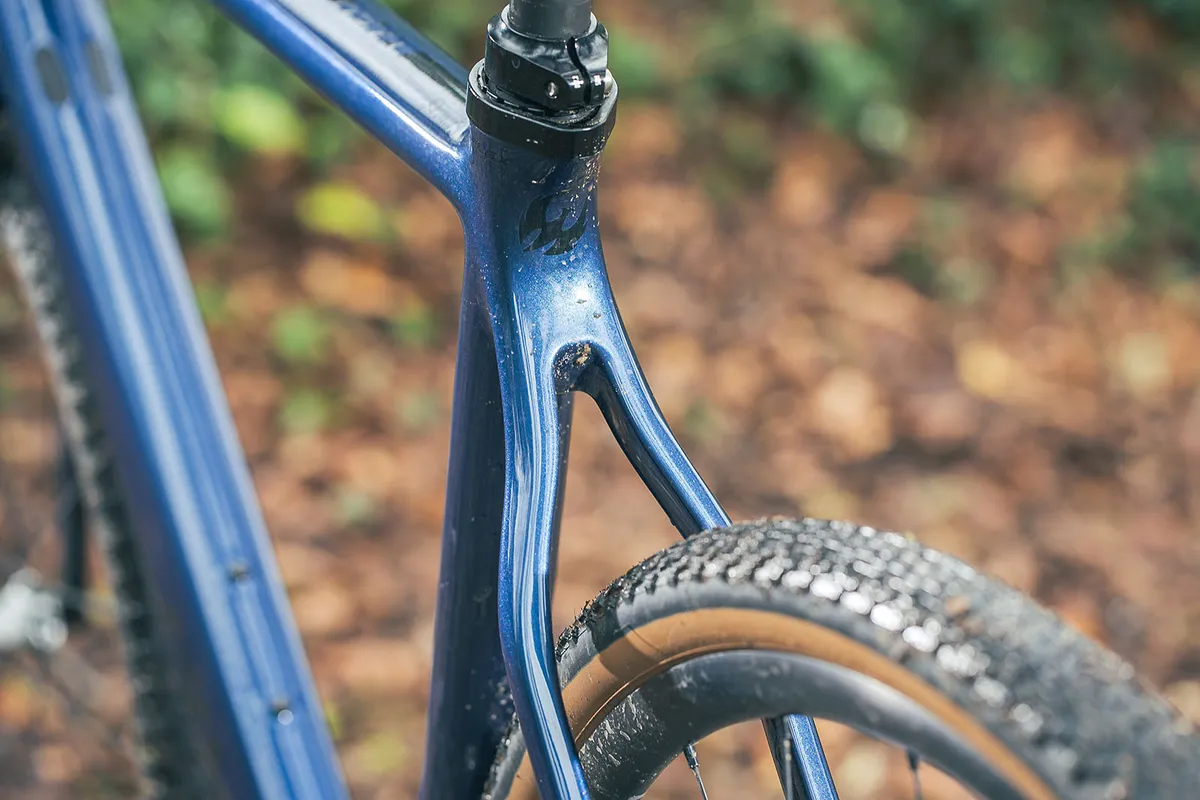
Pivot is known better for its full-suspension mountain bikes than for anything with drop bars.
The Vault, however, is in its fourth generation, debuting back in 2013 as more of a do-it-all cyclocross bike. This new model is much more focused on gravel.
The muscular-looking frame is designed to work with both 1x and 2x drivetrains. It offers wide tyre clearances for up to 700x47c tyres (and 2in wide for 650b wheels).
It achieves this dual-wheel compatibility thanks to its double-dropped stays.
The frame is well appointed, with hidden mudguard mounts and dual-position bottle mounts on the down tube, which enables you to fit larger frame bags. The top tube has bosses for a storage bag too.
The front derailleur mount is removable, and features a covering plate if you choose to go with a 1x drivetrain.
All of this is what I’d expect of a solid gravel bike design, but Pivot has brought something new to the game.
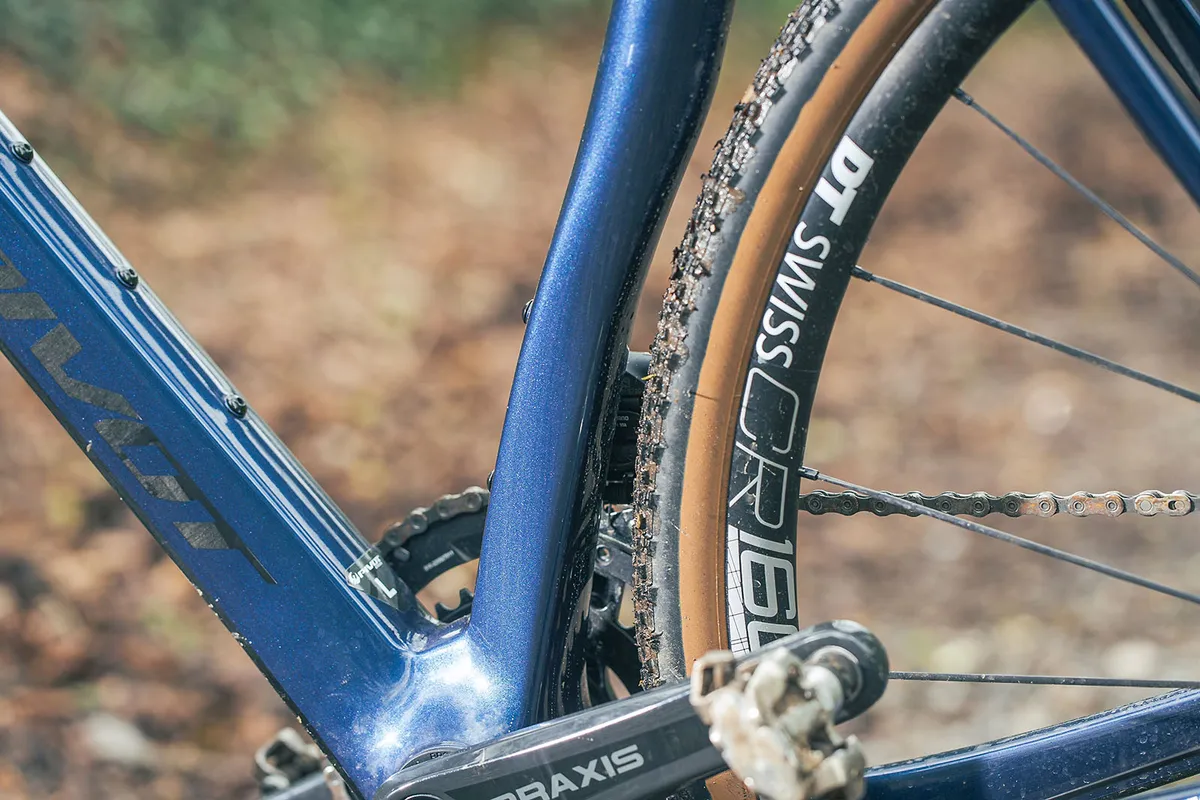
The patented Iso Flex seat tube/seatpost design is Pivot’s take on the ever-growing number of ride-smoothing suspension designs we’re seeing.
Key examples include Cannondale’s system on the Topstone, the adjustable suspension on the latest Specialized Diverge STR and the elastomer-sandwiched stays on BMC’s URS LT ONE.
With Iso Flex, the seat cluster has a standard clamp with an oversized outer. This contains an oversized elastomer sleeve, sandwiched between an internal tube that clamps the post.
The sleeve of elastomer and plastic slides into the oversized seat tube, and is secured with a threaded ring (that you tighten with a Shimano bottom bracket tool).
The sleeve is offered in two sizes. One takes a 27.2mm post for maximum vibration damping, thanks to thicker elastomer walls. Alternatively, you can opt for the thinner-walled elastomer option with a 30.9mm post.
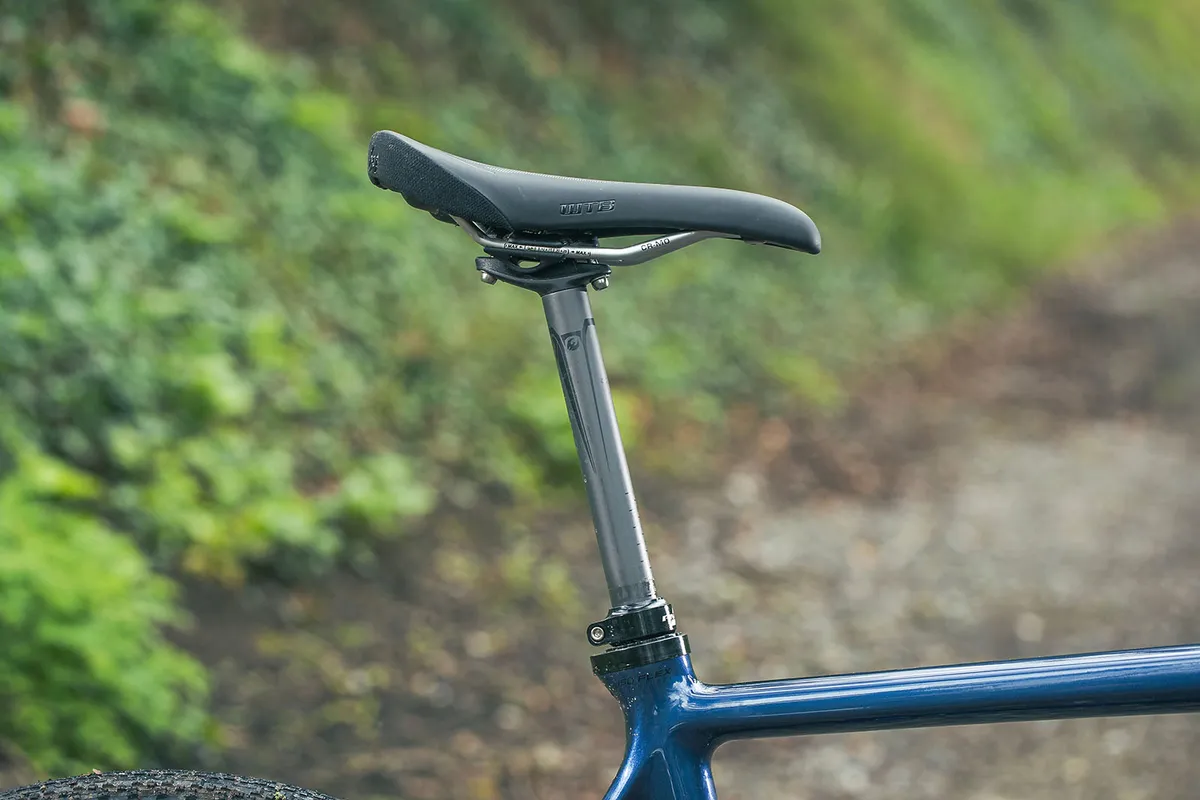
Pivot says the Vault can be used with a dropper post, and the compatibility with a 30.9mm-diameter post allows for far more choice than just a 27.2mm post.
With all this complexity going on around the seatpost, it’d be tricky for Pivot to include provision for a Di2 battery in the usual position.
Instead, it has repositioned the Di2 battery in the down tube, accessible through a hatch at the BB386Evo bottom bracket shell.
The claimed frame weight is 998g for a medium, plus the extra 56g for the Iso Flex insert.
Pivot Vault geometry
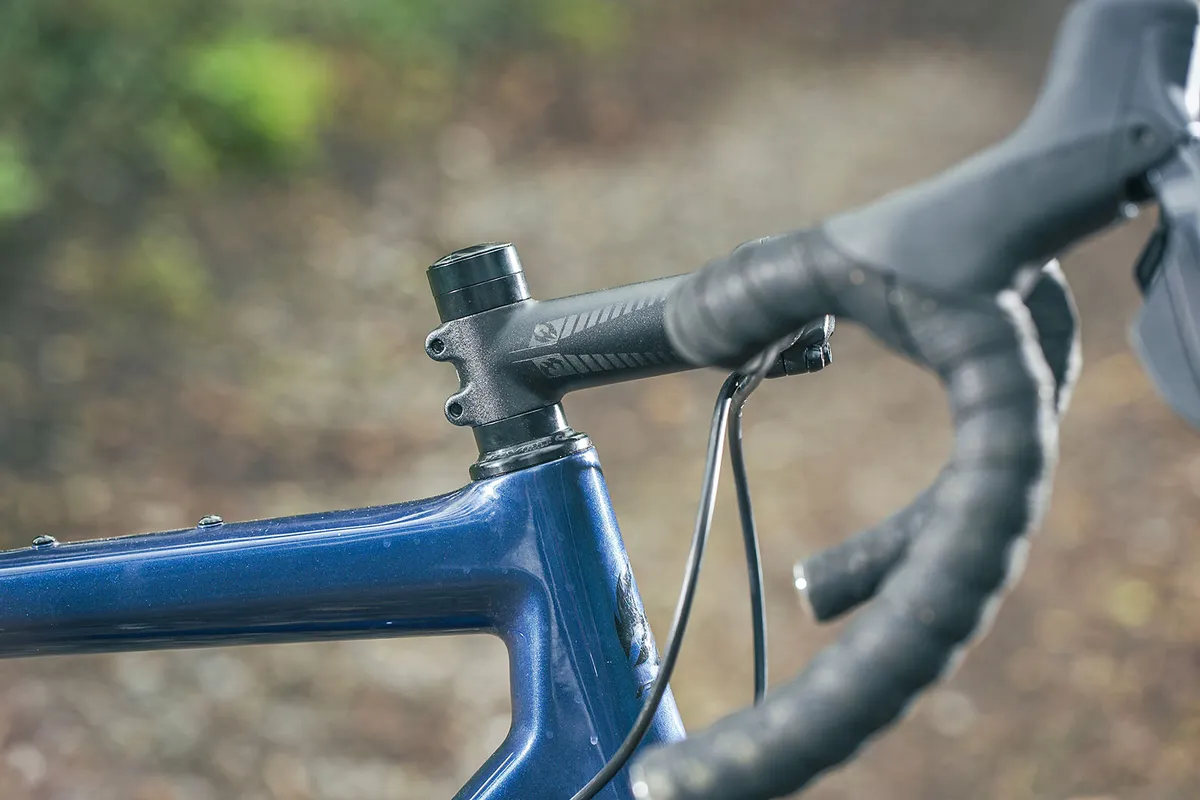
Pivot hasn’t felt the need to slacken the Vault's geometry too much, especially compared to more ‘extreme’ gravel bikes such as the Surly Grappler with its 69.5-degree head angle. My large (56cm) test bike has a 72-degree head angle.
The double-dropped stay design has enabled the brand to keep the back end reasonably compact with 420mm long chainstays. That said, the overall wheelbase is quite long at 1,028mm.
The 589mm stack and 398mm reach puts the Pivot very much at the sportier end of the gravel spectrum.
The 45mm fork offset, combined with the 72-degree head angle, while running 700x40c tyres, works out as a 68mm trail.
Overall, the geometry signifies a bike that should track well on rough surfaces, still be stable at speed and have a degree of responsiveness.
| | XS | S | M | L | XL |
|---|---|---|---|---|---|
| Seat angle (degrees) | 74.8 | 74 | 73.5 | 73 | 73 |
| Head angle (degrees) | 70 | 71.5 | 72 | 72 | 72 |
| Chainstay (mm) | 420 | 420 | 420 | 420 | 420 |
| Seat tube (mm) | 458 | 528 | 548 | 568 | 588 |
| Top tube (mm) | 515 | 538 | 565 | 578 | 590 |
| Head tube (mm) | 105 | 130 | 155 | 170 | 195 |
| Bottom bracket drop (mm) | 70 | 70 | 70 | 70 | 70 |
| Wheelbase (mm) | 1,000 | 1,003 | 1,020 | 1,028 | 1,038 |
| Standover (mm) | 705 | 766 | 787 | 805 | 825 |
| Stack (mm) | 520 | 549 | 574 | 589 | 612 |
| Reach (mm) | 374 | 381 | 395 | 398 | 400 |
Pivot Vault build
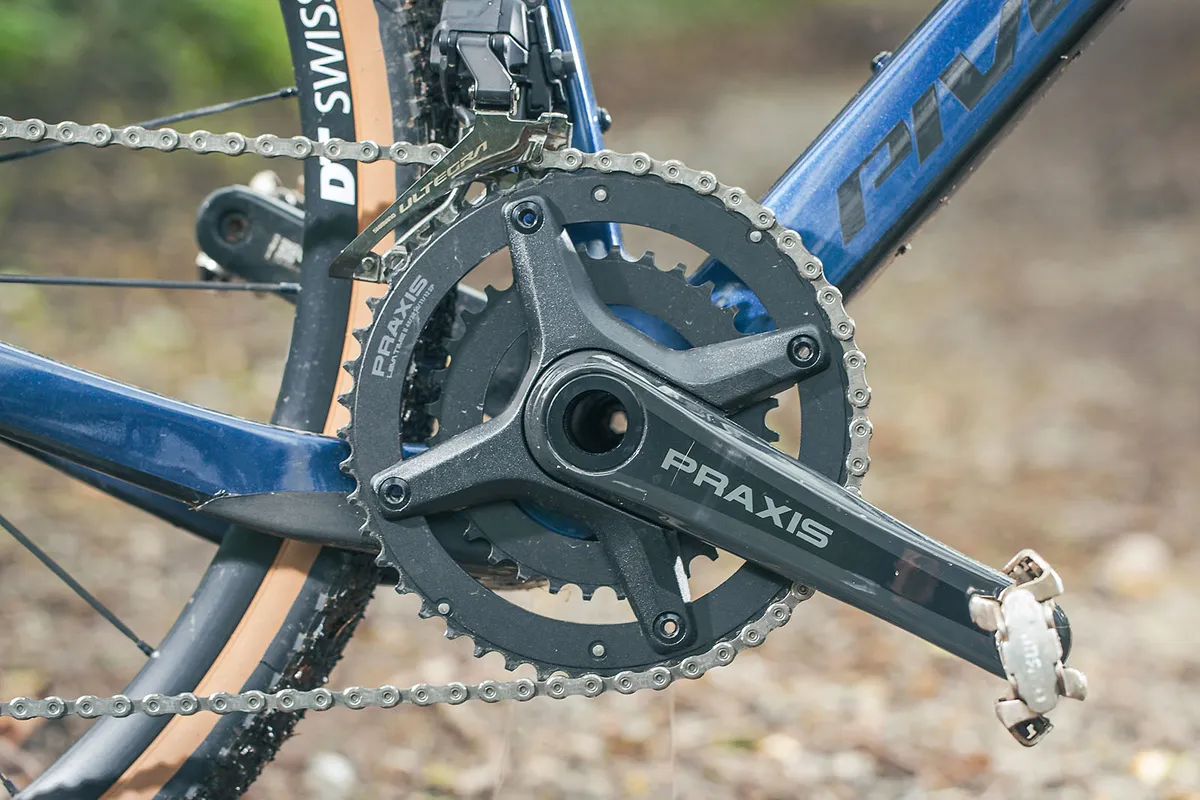
Pivot offers a range of standard builds, starting with this Ultegra Di2 model, rising through Force XPLR AXS and Force AXS Wide to Dura-Ace Di2 (all available with either alloy or carbon wheels).
This version of the Vault doesn’t come cheap at £8,000. Such a price should bring a near top-tier spec list, but I’m a little surprised by a few of the component choices.
Starting up-front, the alloy Easton EA70 AX bar and alloy Pivot stem are good-quality components. The bar’s well-shaped compact drop has a more subtle flare than most gravel handlebars.
However, it’s still a little underwhelming to see an alloy bar fitted – I’d expect to see carbon at this kind of price.
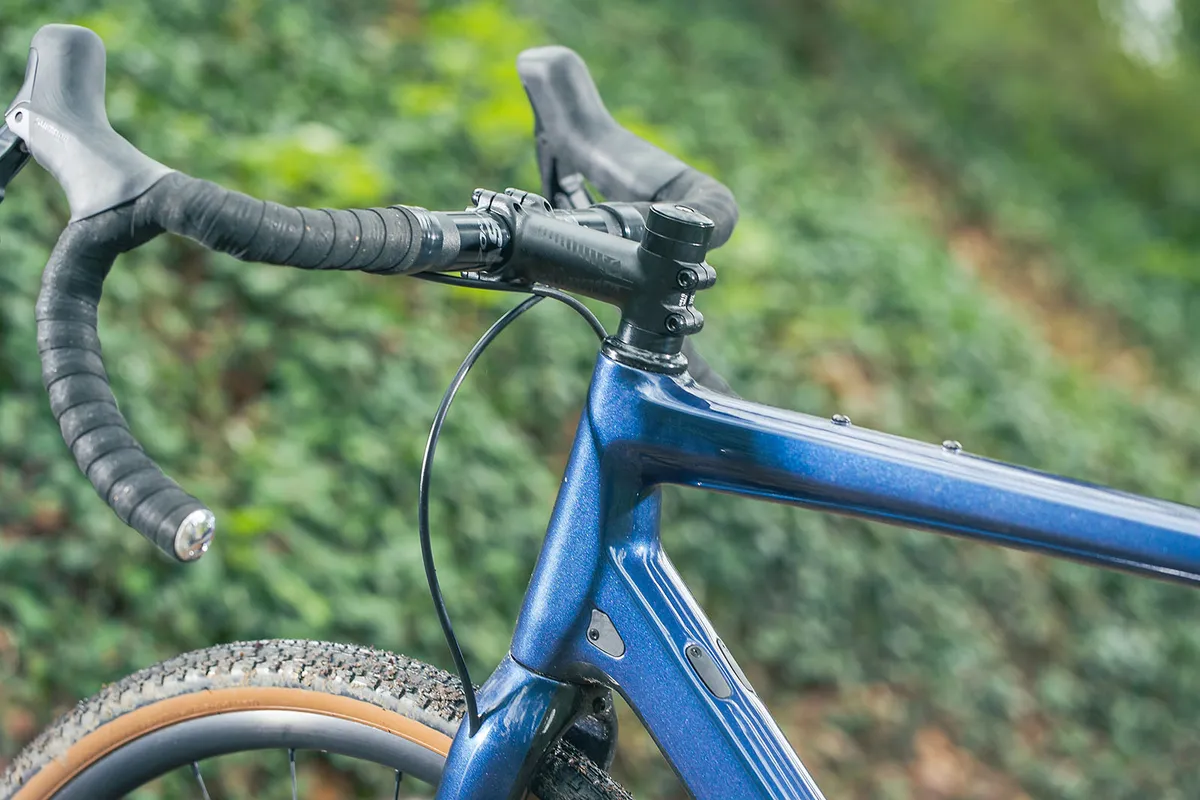
The same goes for the WTB-made saddle, which has entry-level chromoly rails. It’s a good, comfortable and hard-wearing saddle, but it too feels like a base-level component choice here.
The DT Swiss CR1600 wheelset continues this theme – the low 23mm rim depth and tubeless-ready design, with a 22mm internal width, is reasonably up to date.
At 1,730g a pair, it’s a middleweight wheelset, but the Spline hubs look sharp with their machined straight-pull flanges. The rear gets the latest 350 hub internals, with a 36-tooth ratchet system for quick 10-degree engagement.
But, bought aftermarket, this is a sub-£700 wheelset. Although it offers good bang for buck in isolation, I feel somewhat short-changed on an £8,000 gravel bike.
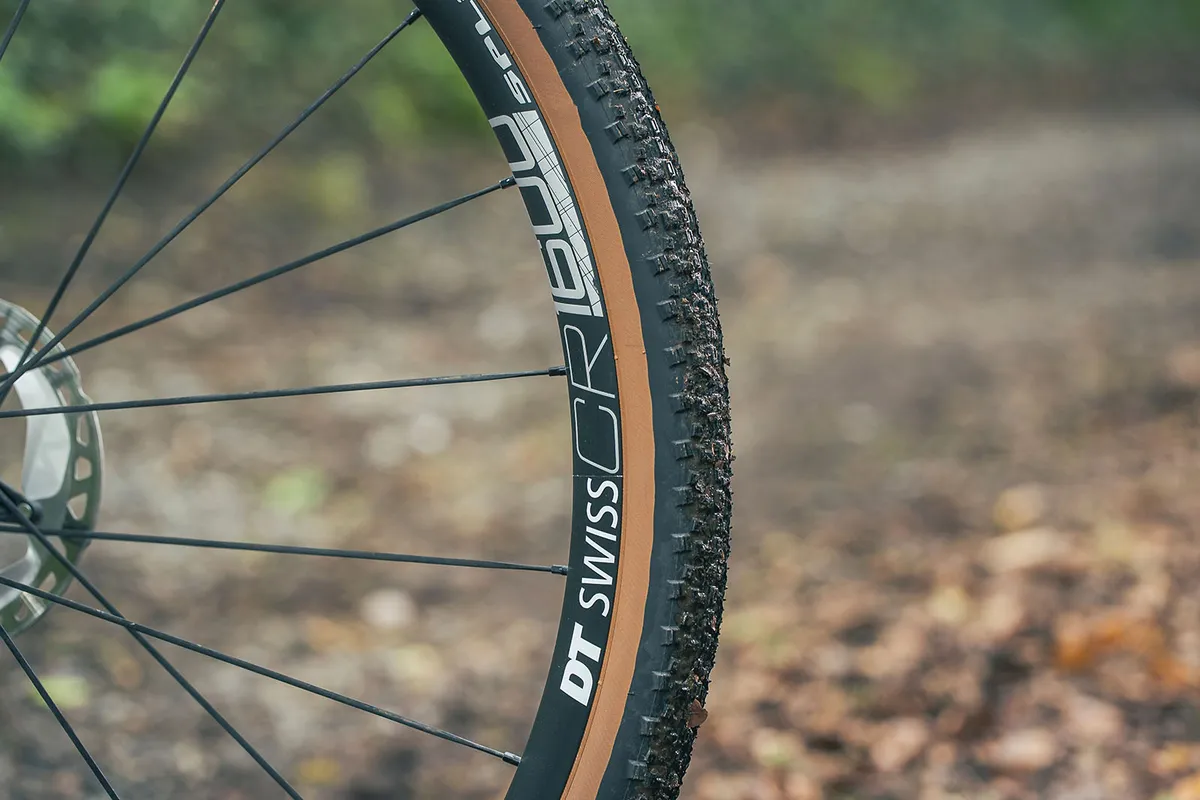
Compare it to 2022’s Bike of the Year, the Giant Revolt Advanced Pro 0. At £5,499, the Revolt comes with lightweight gravel-specific carbon wheels and 2x Shimano GRX Di2. There are more examples besides, where the Vault can’t compete in terms of bang-for-buck.
The wheels are wrapped with Maxxis’ capable Rambler tubeless tyres in a 40c size. They come set up tubeless, too.
The bike, as specified here, is driven by Shimano’s excellent 12-speed Ultegra R8100 Di2 groupset.
It provides very smooth shifting and powerful yet controllable braking (in fact, it’s regarded as BikeRadar’s pick of the Japanese giant’s road bike groupsets).
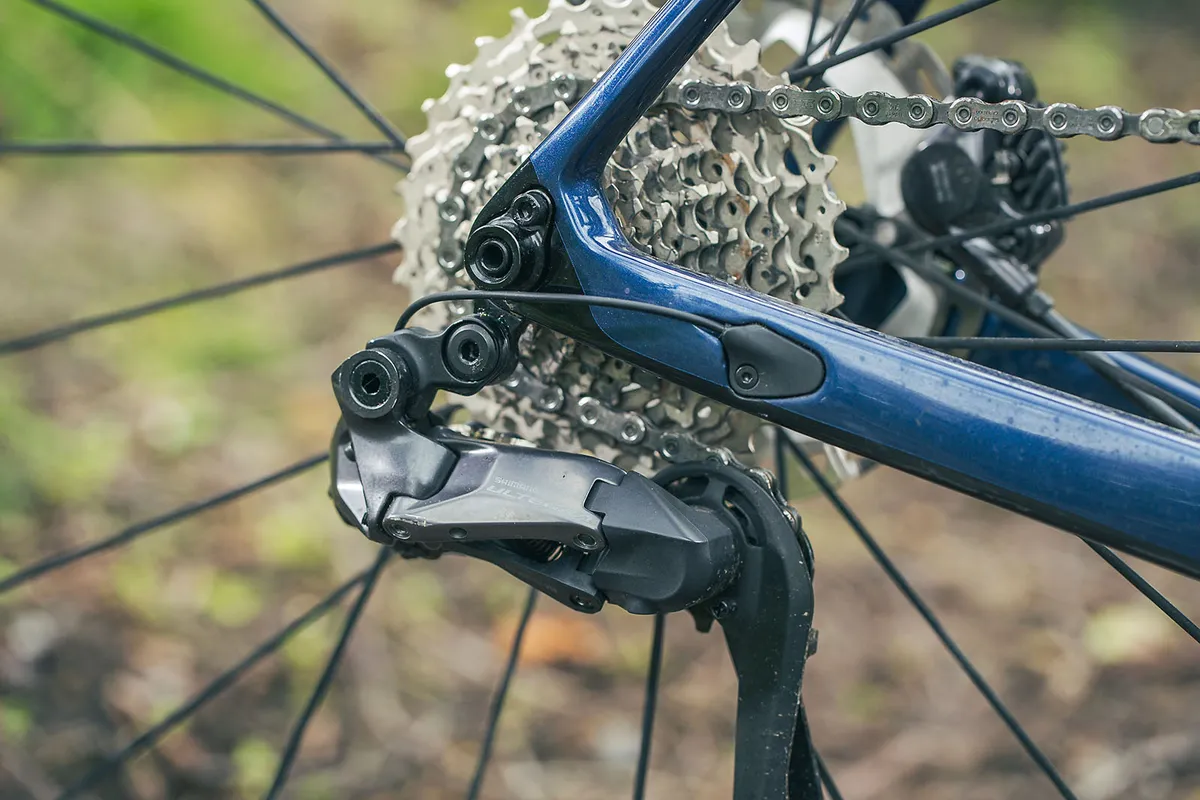
That said, it’s a curious thing to find this road-specific groupset on what is firmly a gravel bike, especially because Ultegra doesn’t have any sort of chain management device such as a GRX-style clutch or AXS XPLR-style damper.
The gearing is well suited to the bike, because Pivot has stepped away from a Shimano crankset. Instead, we get Praxis’ Zayante Carbon cranks and LevaTime II adventure chainrings, with a small 32-tooth inner and 48-tooth outer ring.
This, combined with the widest 11-34t Ultegra cassette, gives a great spread for most gravel adventures.
Pivot Vault ride impressions
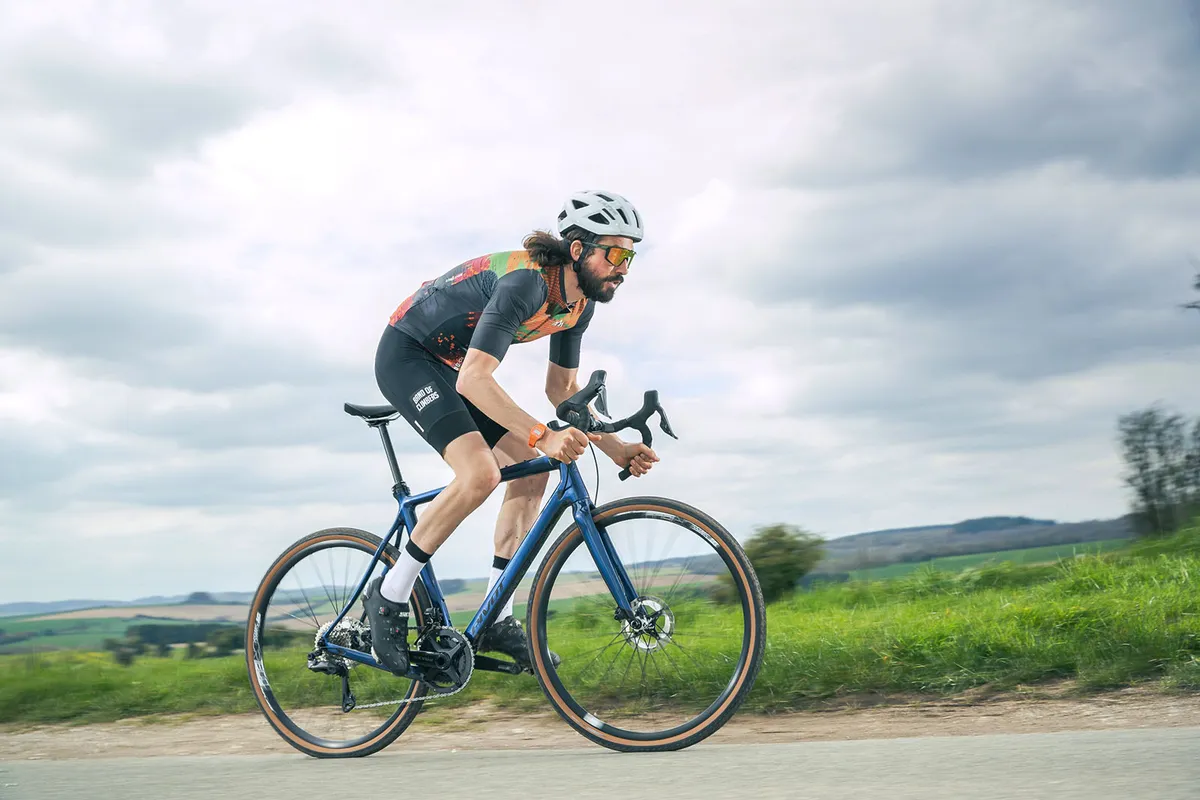
Despite reservations about the Vault build’s value for money on paper, the ride is brilliant.
At launch, I was somewhat sceptical about the Iso Flex sleeved seatpost design. Compared to its more complex rivals, it seemed quite low-tech.
However, the sleeved post works brilliantly. The back end of the Vault feels taut, short and nimble thanks to the compact (for a gravel bike) chainstays, yet it’s all wrapped up in compliant cushioning that makes a real difference up through the saddle.
The geometry looks quite ‘safe’ on paper – a sort of road layout adapted for gravel. But on the rough stuff, the Vault really comes into its own.
On fast, wide gravel roads with plenty of ruts and bumps to traverse, it’s rapid. It’s not quite in the same speed league as the aero-optimised BMC Kaius or Factor Ostro Gravel, but it’s not far behind.
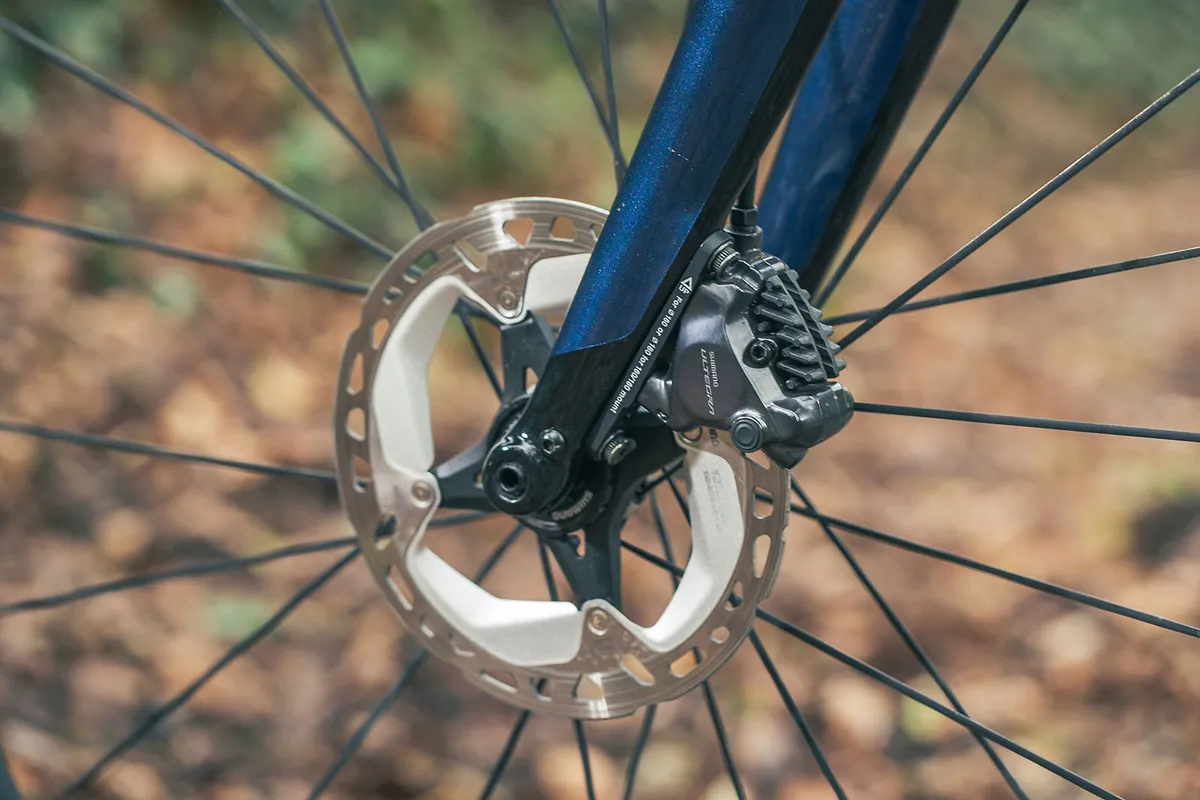
It’s when the going becomes technical that the Pivot gets out in front. While those more racing-focused gravellers can become unsettled and a handful, the Pivot settles in.
It becomes nimble and playful, delivering plenty of controlled confidence, even encouraging me to take more extreme lines (in the end, I really wanted a dropper post on the build to really push the bike’s boundaries).
The Ultegra Di2 drivetrain coped admirably with some properly rough, choppy terrain. The chain never dropped, but it did make itself known loudly, often bouncing against the chainstays.
In that regard, perhaps GRX Di2 would have been an even better choice, even if it's ‘only’ 11-speed.
Uphill, the Vault rewards seated climbing efforts with its subtle vibration damping, yet brings solid power transmission thanks to the stiffness through the oversized bottom bracket zone.
On smoother dirt (or even road) descents, the Vault excels, using the 40c tyre volume to smooth the way. The stability of the bike helps to keep speed high.
When the going got a bit choppier, I found the all-alloy cockpit pushed a bit of buzz through to my hands.
In theory, I’d like to try out the Vault frame combined with a suspension fork such as the RockShox Rudy XPLR, or perhaps RedShift’s Shockstop stem.
However, even a step up to a quality carbon gravel bar such as ENVE’s G-Series or Prime’s Orra Gravel bar would help settle vibration transmission further.
Pivot Vault bottom line
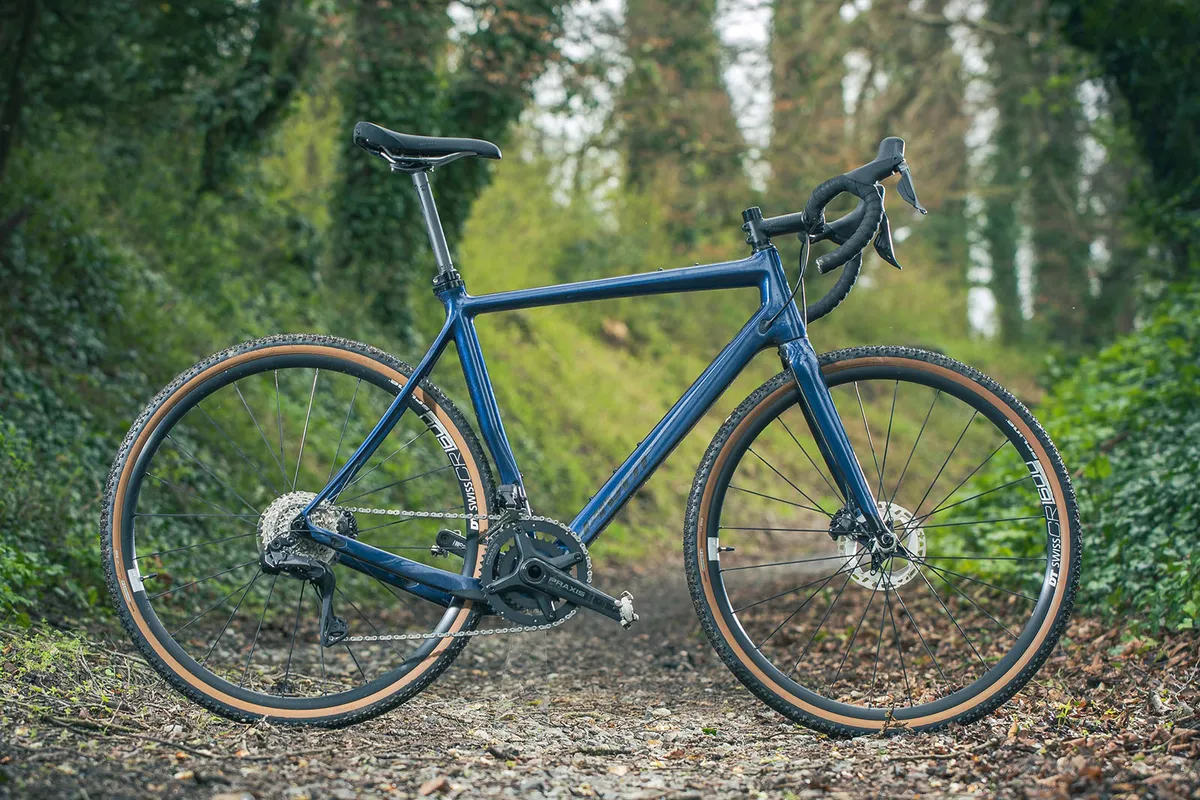
The Pivot Vault is a sublime slice of modern gravel machinery, and the star of the show is the frameset.
It rides smoothly, it's quick on tarmac and rapid in the rough, and can take on technical tracks with flickable fun. Yet, it’s very stable and easy to ride when you just want to eat up the miles.
The downside, however, is that in this build, it doesn’t represent the same value for money as some of its big-brand rivals.
The Vault frameset brings outstanding performance, but the package could still be improved upon for the money.
Gravel Bike of the Year 2023 | How we tested
Each of the bikes selected for our Bike of the Year gravel category was first subjected to a two to three-hour ride at Salisbury Plain in the south of England.
This first fast blast took in wide gravel roads, mountain bike singletrack and forest fire roads, with the ride out using connecting towpaths and bridleways, and the ride back taking in a bit of tarmac.
Next came a 70-mile/113km route over mixed terrain with plenty of elevation changes.
The bikes were then ridden back-to-back over a few weeks to compare the pros and cons of each contender.
I reached my decision on the best-balanced bike, weighing up how well it handles, how well it's equipped, and most importantly how much fun it is.
Our gravel Bike of the Year contenders
- BMC Kaius 01 One
- Factor Ostro Gravel
- Ridley Kanzo Adventure Rival AXS
- Pivot Vault Ultegra Di2
- Giant Revolt X Advanced Pro 1
Thanks to…
Thanks to our sponsors, Lazer, FACOM tools and Band Of Climbers for their support in making Bike of the Year happen.
Product
| Brand | pivot |
| Price | 7599.00 EUR,8000.00 GBP,6699.00 USD |
| Weight | 8.8100, KILOGRAM (L) - |
Features
| Fork | Carbon |
| br_stem | Pivot alu 100mm |
| br_chain | Shimano Ultegra |
| br_frame | Carbon with Iso Flex seat tube |
| Tyres | Maxxis Rambler EXO TR 40mm |
| br_brakes | Shimano Ultegra hydraulic disc |
| br_cranks | Praxis Zayante Carbon with Praxis Leva Time II 48/32 chainrings |
| br_saddle | WTB for Pivot |
| br_wheels | DT Swiss CR1600 Spline |
| br_shifter | Shimano Ultegra Di2 |
| br_cassette | Shimano Ultegra 11-34 |
| br_seatpost | Pivot 27.2 Carbon |
| br_handlebar | Easton EA70 AX |
| br_availableSizes | XS, S, M, L, XL |
| br_rearDerailleur | Shimano Ultegra Di2 |
| br_frontDerailleur | Shimano Ultegra Di2 |
